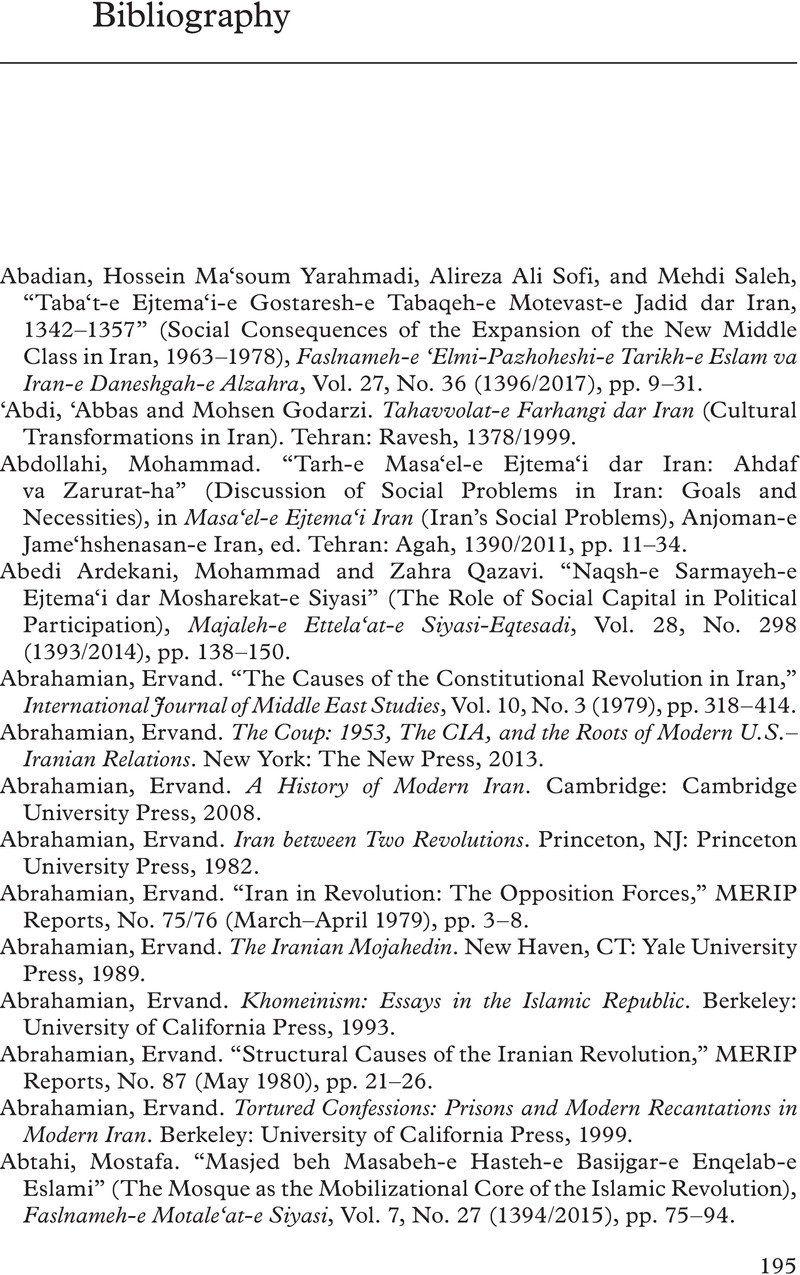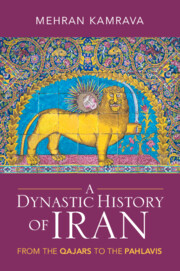Book contents
- A Dynastic History of Iran
- A Dynastic History of Iran
- Copyright page
- Contents
- Figures
- Tables
- Preface
- Acknowledgments
- 1 Introduction
- 2 Qajar Autocracy
- 3 The Constitutional Revolution
- 4 The New Dynasty
- 5 Iran and Great Game Politics
- 6 Dynasty Consolidated
- 7 Economic Development, Political Underdevelopment
- 8 The Gendarme of the Region
- 9 The Monarchy’s End
- 10 Conclusion
- Bibliography
- Index
- References
Bibliography
Published online by Cambridge University Press: 18 August 2022
- A Dynastic History of Iran
- A Dynastic History of Iran
- Copyright page
- Contents
- Figures
- Tables
- Preface
- Acknowledgments
- 1 Introduction
- 2 Qajar Autocracy
- 3 The Constitutional Revolution
- 4 The New Dynasty
- 5 Iran and Great Game Politics
- 6 Dynasty Consolidated
- 7 Economic Development, Political Underdevelopment
- 8 The Gendarme of the Region
- 9 The Monarchy’s End
- 10 Conclusion
- Bibliography
- Index
- References
Summary

- Type
- Chapter
- Information
- A Dynastic History of IranFrom the Qajars to the Pahlavis, pp. 195 - 211Publisher: Cambridge University PressPrint publication year: 2022

